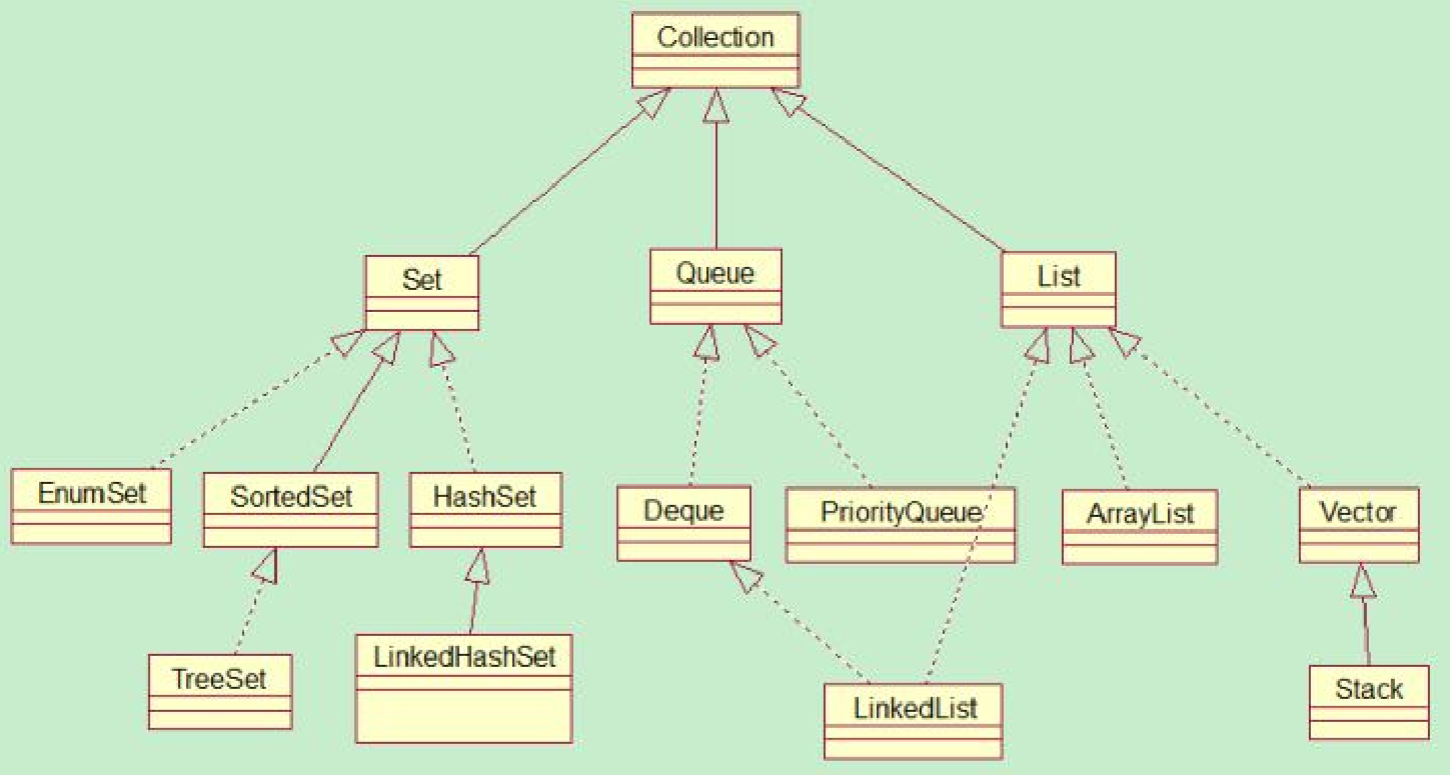
1.大boss接口Collection
- boolean add(E e)
- boolean addAll(Collection<? extends E> c)
- void clear()
- boolean contains(Object o)
- boolean containsAll(Collection<?> c)
- Iterator<E> iterator()
- boolean remove(Object o)
- boolean removeAll(Collection<?> c)
- boolean retainAll(Collection<?> c) 仅保留此集合中包含在指定集合中的元素
- int size()
- Object[] toArray()
2.迭代器Iterator
这是一个接口,Collection继承了它,只有3个方法,hasNext()判断是否还有元素,next()获取当前的元素并移动到下一个位置,remove()从底层集合中删除此迭代器返回的最后一个元素,用来遍历的。实现如下
ArrayList<Integer> list=new ArrayList<Integer>(); list.add(10); list.add(33); Iterator it=list.iterator(); while(it.hasNext()) { System.out.println(it.next()); }
它是以内部类的方式实现的,是依赖集合存在的,不同的集合容器存取方法不同,所以在各自类中用迭代器遍历的方法也不同。
3.List有序(存储和取出顺序一致,数组就算是有序)、可重复。
4.Set:元素不可重复
查了不少博客,没啥人讲得详细,大概都是这几个方法,都是在子类中体现,理解了HashMap,ArrayList,LinkedList的底层数据结构基本就理解了全部集合。